Here at the southern end of San Francisco Bay, tall grasses and other slender plants thrive around the edges of our often-salty marshes.
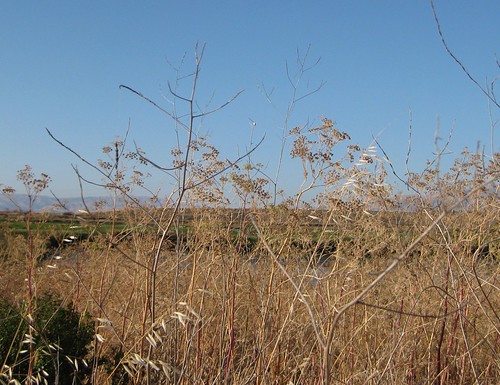 Towards the end of every summer, as the grasses start to dry out, you’ll sometimes see a gleaming white jewel, shining from the top of a stem.
Towards the end of every summer, as the grasses start to dry out, you’ll sometimes see a gleaming white jewel, shining from the top of a stem.
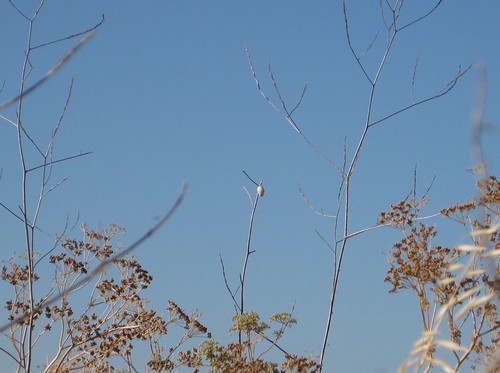 And if you look closer, it becomes quite a puzzle what that might be. A chrysalis? A gall of some sort?
And if you look closer, it becomes quite a puzzle what that might be. A chrysalis? A gall of some sort?
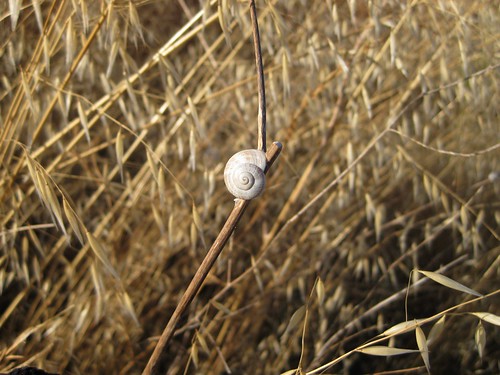 But it turns out to be both simpler and stranger than that. The little jewels are actually the desiccated shells of brown garden snails, bleached by the summer sun.
The common garden snail in this area is helix aspersa, the culinary snail of France, imported here in the gold-rush era by a Frenchman who intended to sell them as food. Normally, they are chestnut to ebony in color, with lighter striations.
But the snails that we find in the grasses– I count at least eight in this picture –have dried up after their food sources, and have been left to sit in the sun for much longer than they would like. Seems clear enough that they climbed up the stem for a leafy snack while the plant was still green, but didn’t make it down in time.
But it turns out to be both simpler and stranger than that. The little jewels are actually the desiccated shells of brown garden snails, bleached by the summer sun.
The common garden snail in this area is helix aspersa, the culinary snail of France, imported here in the gold-rush era by a Frenchman who intended to sell them as food. Normally, they are chestnut to ebony in color, with lighter striations.
But the snails that we find in the grasses– I count at least eight in this picture –have dried up after their food sources, and have been left to sit in the sun for much longer than they would like. Seems clear enough that they climbed up the stem for a leafy snack while the plant was still green, but didn’t make it down in time.

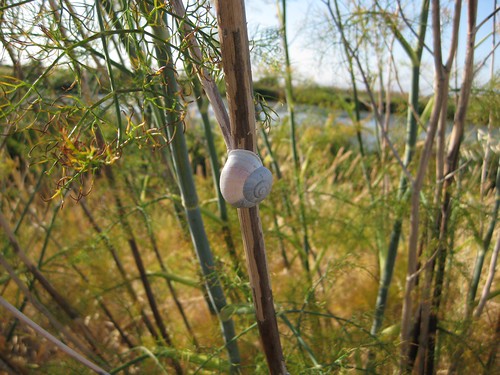 Depending how long it’s been, the shells may still be striped, faded, or fully bleached. In some cases the shell is long empty and backlit by sunlight. In others, the resident has only recently passed.
In some cases the surface luster weathers shiny like a jewel, catching your eye from a distance. And that’s how we end up with ornamented grasses, glittering with the gaunt remains of gallic gastropods.
Depending how long it’s been, the shells may still be striped, faded, or fully bleached. In some cases the shell is long empty and backlit by sunlight. In others, the resident has only recently passed.
In some cases the surface luster weathers shiny like a jewel, catching your eye from a distance. And that’s how we end up with ornamented grasses, glittering with the gaunt remains of gallic gastropods.




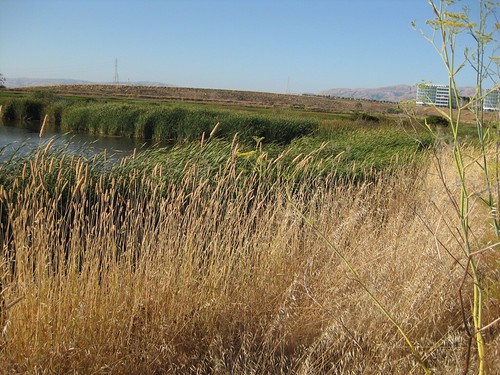

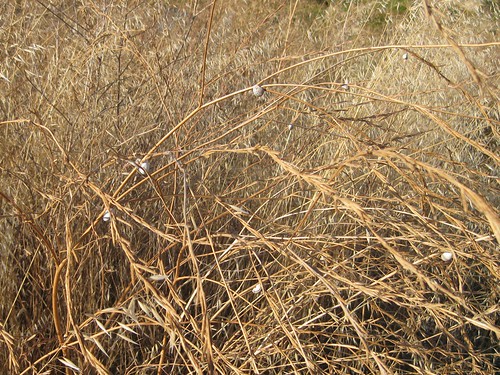
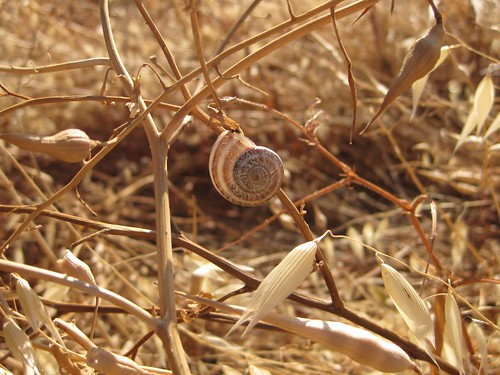
Cool. I’ve seen sticks with whole strings of them, in France. There, they "oversummer" in this way. Are you sure they are not doing that there too?
It never occurred to me that an empty snail shell could cling to the grass like that. Must be some pretty impressive snail slime.
I was riding on the Bay Trail last week and these guys were migrating across the road. I tried to keep my eyes sharp to kill as few as possible. Now you’ve got me thinking them migrants were headed toward the moisture away from the drying.
Thanks for explaining these guys.
Sincerely,
-daniel
I work near an entry point to the Bay Trail, and I saw the migration as well. I also took pictures of them crossing and a shell on a branch. Cool! Being a recent transplant from Florida, I thought this was something that was old news to most long-time residents.
Perhaps the snails are victim to a fungal parasite that makes them climb up vegetation, similar to the fungus that zombifies ants. Infected ants are compelled to climb a blade of grass of a certain height and clamp on to the end with their jaws. The fungus then converts the rest of the ant into spores and releases them, aided by the height of the ant’s perch.
http://www.sciencedaily.com/releases/2011/03/110302171309.htm